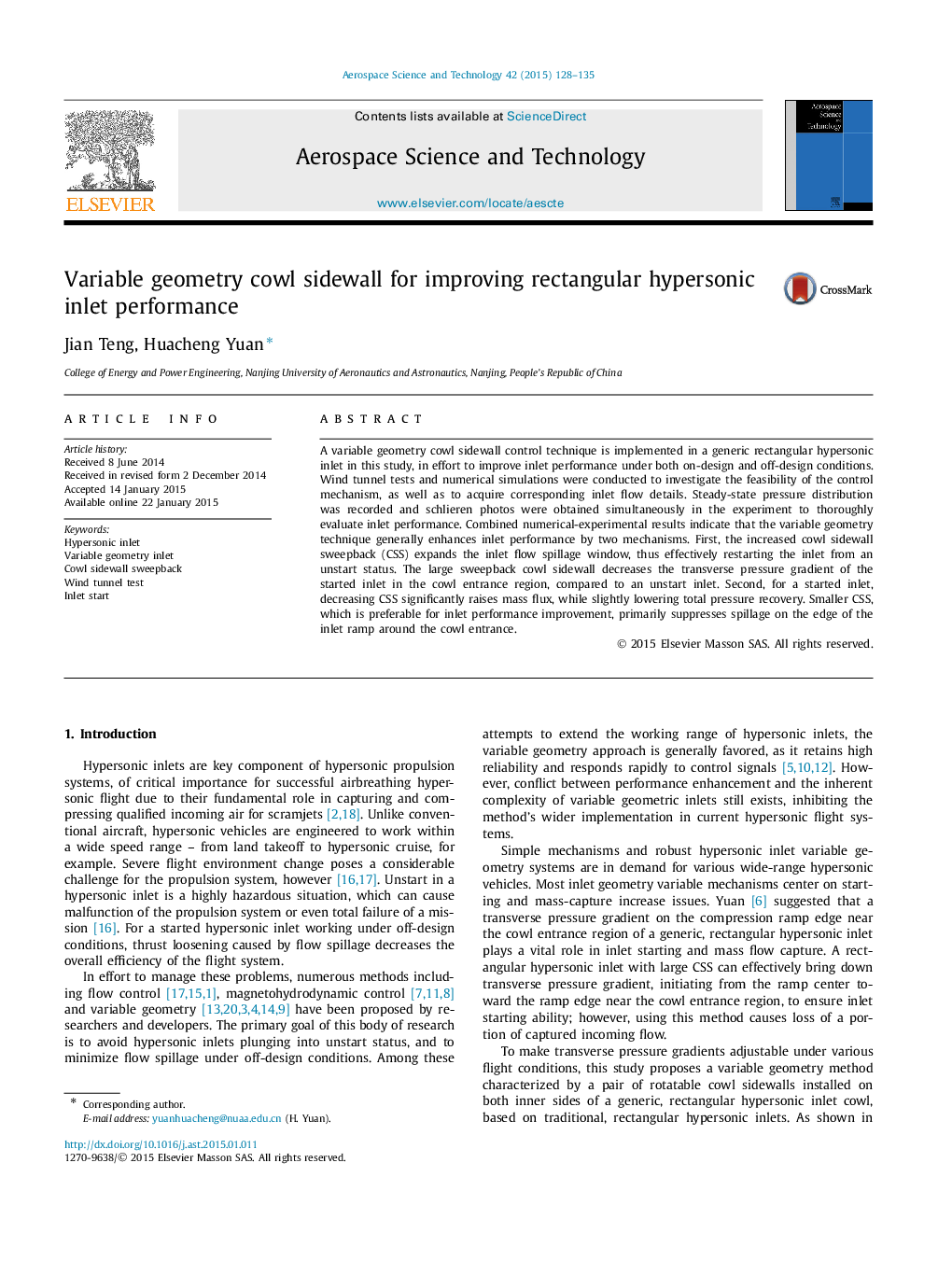| Article ID | Journal | Published Year | Pages | File Type |
|---|---|---|---|---|
| 1717912 | Aerospace Science and Technology | 2015 | 8 Pages |
A variable geometry cowl sidewall control technique is implemented in a generic rectangular hypersonic inlet in this study, in effort to improve inlet performance under both on-design and off-design conditions. Wind tunnel tests and numerical simulations were conducted to investigate the feasibility of the control mechanism, as well as to acquire corresponding inlet flow details. Steady-state pressure distribution was recorded and schlieren photos were obtained simultaneously in the experiment to thoroughly evaluate inlet performance. Combined numerical-experimental results indicate that the variable geometry technique generally enhances inlet performance by two mechanisms. First, the increased cowl sidewall sweepback (CSS) expands the inlet flow spillage window, thus effectively restarting the inlet from an unstart status. The large sweepback cowl sidewall decreases the transverse pressure gradient of the started inlet in the cowl entrance region, compared to an unstart inlet. Second, for a started inlet, decreasing CSS significantly raises mass flux, while slightly lowering total pressure recovery. Smaller CSS, which is preferable for inlet performance improvement, primarily suppresses spillage on the edge of the inlet ramp around the cowl entrance.
